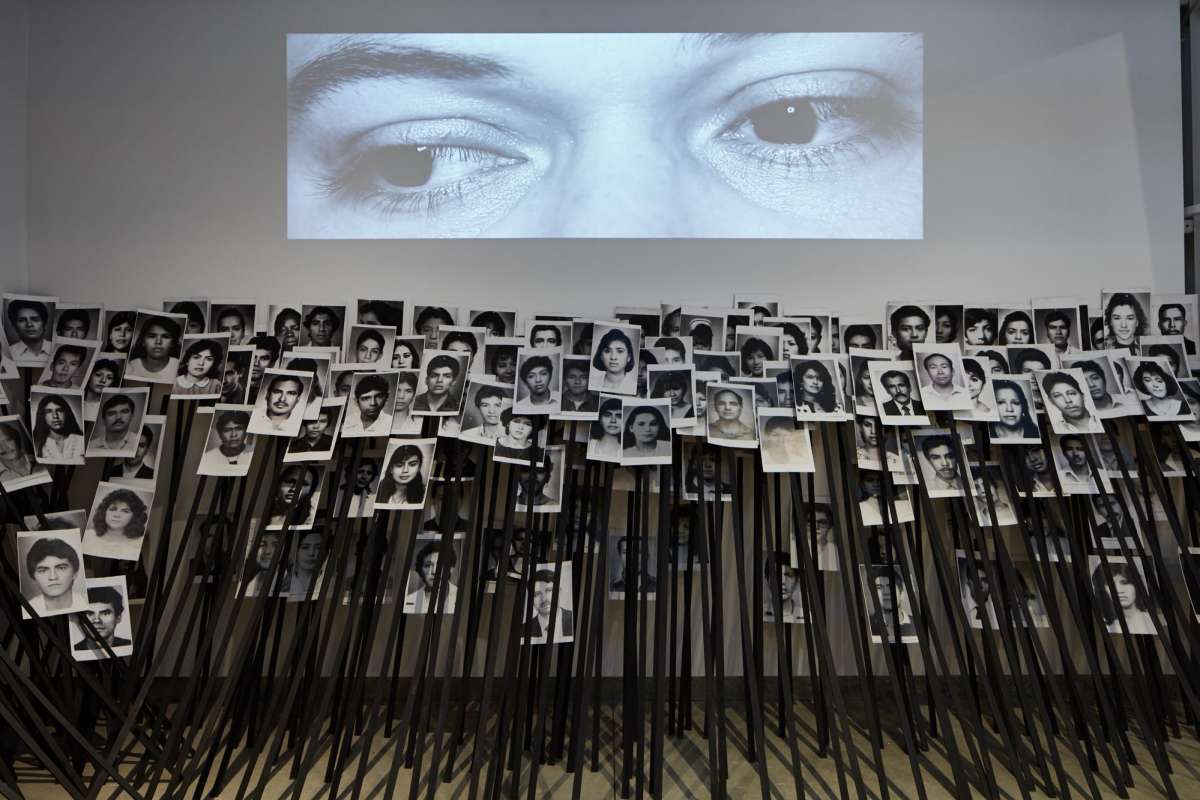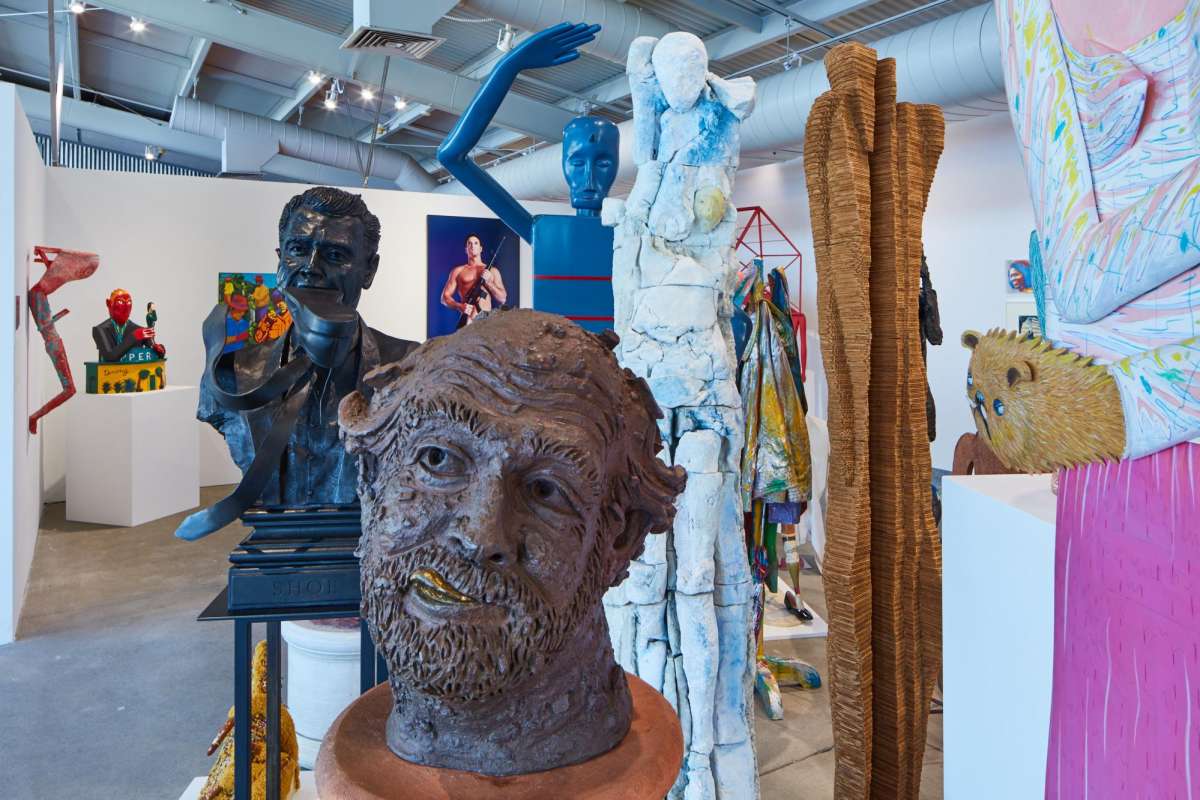An uncertain approach to political art at di Rosa
An uncertain approach to political art at di Rosa
Aug. 18, 2018 Updated: Aug. 18, 2018 1:18 p.m.




How should one evaluate works of art that rely for their impact on the best of political intentions, no matter how flabby their physical shape?
My email inbox is filled each morning with pitches to cover this or that exhibition or artist, many addressing the most pressing matters of social welfare. The fraught time we inhabit impels us all to reflect, respond, resist. Artists and curators — yes, and critics, too — face the stark imperative of relevancy: How can we speak publicly at all today, if we do not speak out against the neglect and outright cruelty of systems tooled to keep supposed “winners” on top and “losers” powerless and out of sight?
It is in just such a setting that great artists distinguish themselves from the merely good. For every Richard Misrach, whose “Border Cantos” series of photographs succinctly convey both the folly and fear embodied by the idea of a U.S./Mexico wall, there may be 50 artists who come up with only slogans.
Tania Bruguera’s conceptually ruthless activism-as-art may be an influential model, but it is a method few others can imitate. (And trying to bottle and sell it, as the Yerba Buena Center for the Arts did last year, is equally futile.)
“Assembling the Choreography of Protest,” organized by guest curator Lexa Walsh, is either an innovative new approach or an intellectual straitjacket.
Photo: Johnna Arnold / di Rosa Center for Contemporary Art, Napa
I didn’t see the first installment of “Be Not Still: Living in Uncertain Times” at the di Rosa Center for Contemporary Art, but Part Two is heavy on lectures and slogans, at the expense of dialogue. The exhibition is on view in Napa through Dec. 30.
Part Two is itself divided into halves, separated by a shuttle bus ride between the museum’s main exhibition buildings. (A third space, founder Rene di Rosa’s quirkily art-bedecked residence until he died in 2010, is no longer open to the public.)
I’m sure the museum’s idiosyncratic visitor policies colored my experience of the show. A pleasant but too-loud docent led a small group through the first building as I held back, preferring a more private experience. Done with his tour, he startled me with an uninvited discourse on one work.
Ferried to the second building (walking the grounds is not allowed weekdays, when the guard staff is limited), I was trapped between tram rounds, forbidden by a guard even to step outdoors to experience a work visible just beyond the unlocked back door.
That close control of one’s visit fits precisely the curatorial demands placed on viewers of art in the first gallery. Organized by guest curator Lexa Walsh, “Assembling the Choreography of Protest” is, depending upon your museological philosophy, either an innovative new approach or an intellectual straitjacket. Walsh herself describes an effort to “utilize, and perhaps even instrumentalize, the di Rosa collection to evoke the choreographies of protest.”
To judge from the show, by that she means she has arranged collection objects to constrain their meaning to a story she wants to tell. The tone is set by a life-size Viola Frey figure, a 1978 clay sculpture from her “Grandmother Series,” turned to face the gallery wall as if contemplating another work of art (Judy Meyers Halem’s “Iwo Jima,” 1973, depicting Disney characters planting an American flag).
Ranu Mukherjee’s commissioned installation “Succession” combines projected video of dance movement and drawings at immense scale.
Photo: Johnna Arnold / di Rosa Center for Contemporary Art, Napa
Turn a corner, and we are confronted by a tightly crowded installation of 30 sculptural figures, grouped to suggest they are marching across the gallery in the direction of a brightly striped wall (a stylized sunset? the glow of a cataclysmic detonation?). The di Rosa collection, never known for subtlety or consistency, never looked so motley. A Terry Allen bronze depicting a suited man, shoe stuffed into his mouth, needs a somber environment to tease out its surreal social commentary. Here, it’s just silly. Ditto a cadaverous Stephen de Staebler, plumped out of its somber state of desiccation, caught in a river of herky-jerky movement and playful color.
Elsewhere, a David Ireland cloud of concrete, titled “Nimbus” and set off by a halo of gold, gives up its sacred aura in a closely spaced circle of disparate works. Many of the works are chair-like forms, assembled for what looks like group therapy.
The second building gets better — at least, less bad — with commissioned installations by Victor Cartagena, Ranu Mukherjee and Lava Thomas. All three are accomplished artists with something to say, and each has been given their own precinct in a large gallery.
Mukherjee’s piece, combining projected video of dance movement and drawings at immense scale, is meant to deal with the topic of health, we are told. But that framing is virtually useless. It constricts a work that strives to expand beyond politics to the lyrical — an approach given little credence here.
Cartegena and Thomas rely on the contemporary art strategy, now somewhat tired, of commandeering a large volume of space by filling it with lots of small objects. There’s a certain wow-factor to confronting, in Cartagena’s piece, what must be hundreds of immigrant faces, topped by massive video projections of two pairs of eyes. In the end, however, it’s hard to see what the work adds to one of the most vexing debates of our era.
Suitably, the final work in the exhibition, thank goodness, closes on a high note. Lava Thomas chose as her theme the idea of solidarity, producing a soundless tribute to music — a shower of red tambourines suspended from the ceiling — as a metaphor for community. The tambourine, a wall text points out, is an easily learned instrument that plays a part in the traditional music of numerous cultures around the world. Thomas lightly imposes a reference to her own African American heritage here and there, but keeps the whole an open-ended invitation to unity, as a wall of mirrored instruments incorporates the viewer, the room and, by extension, the world.



